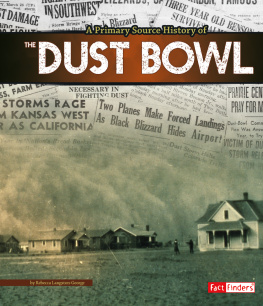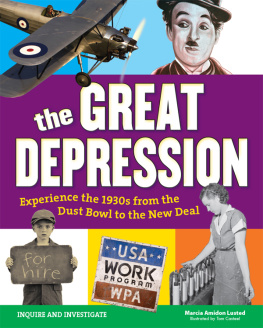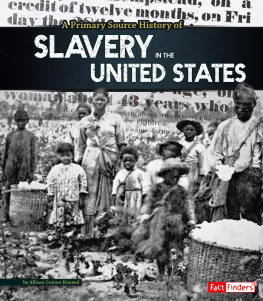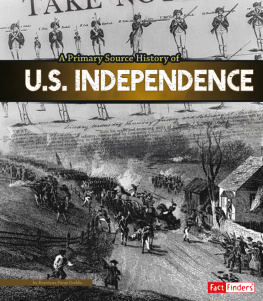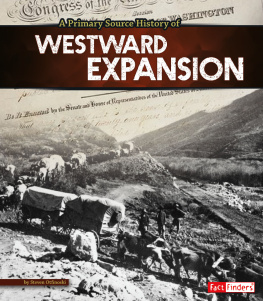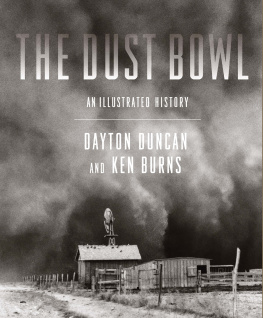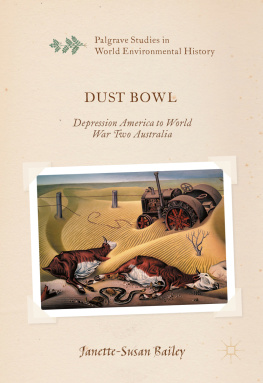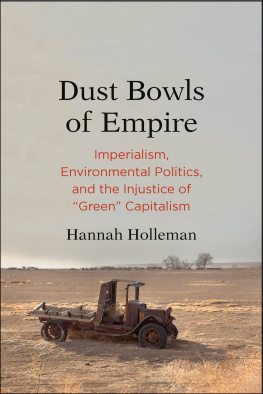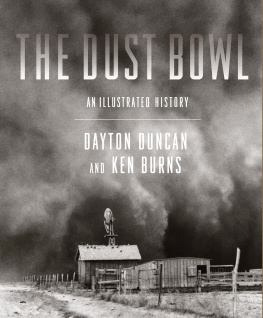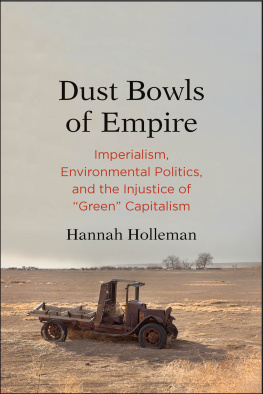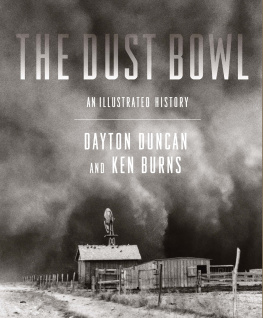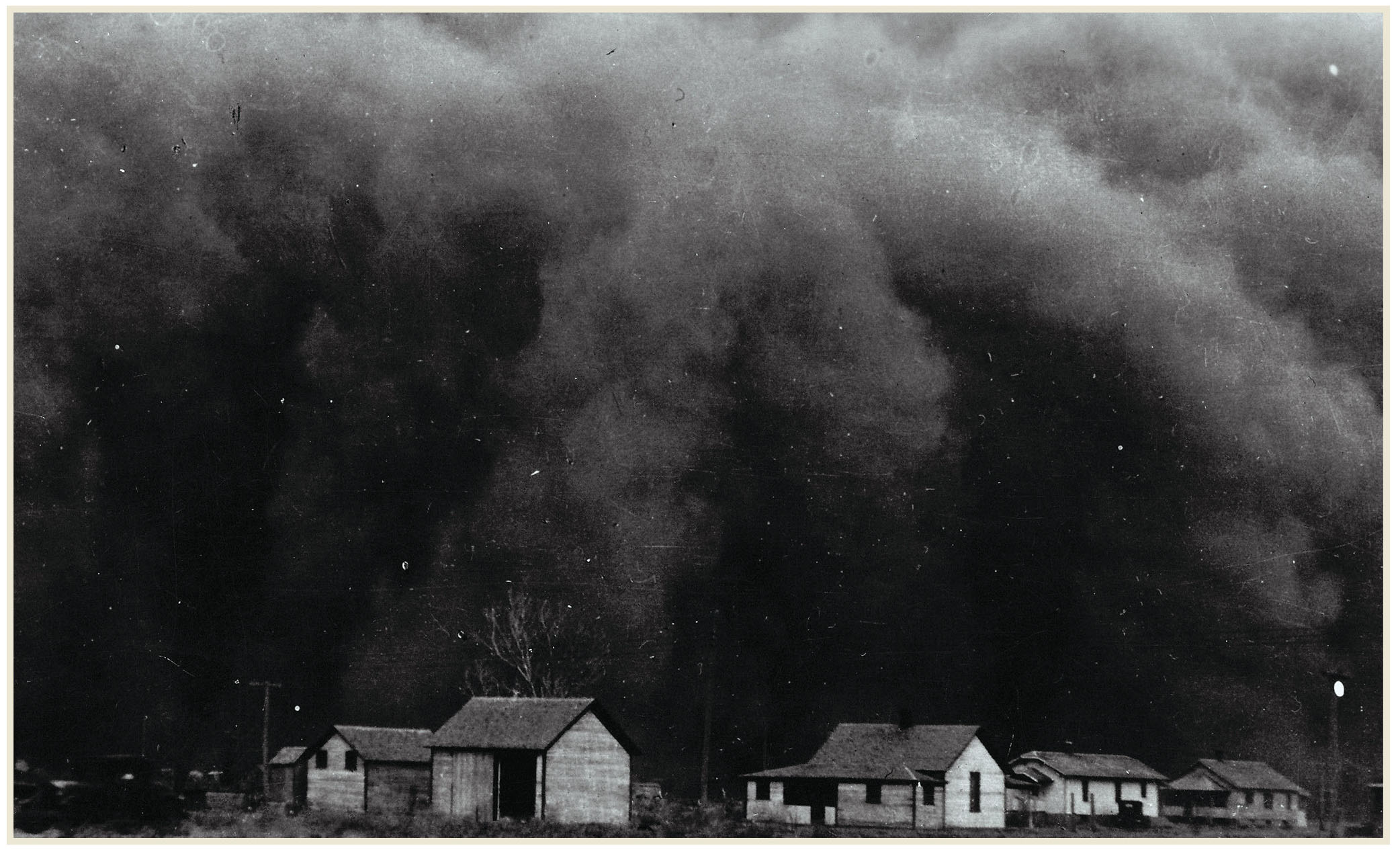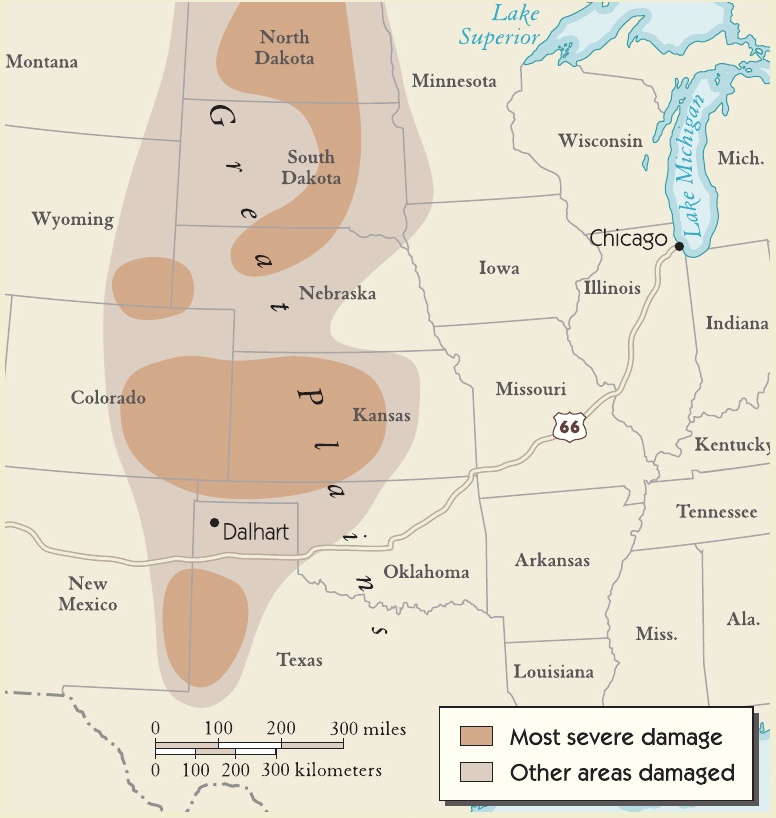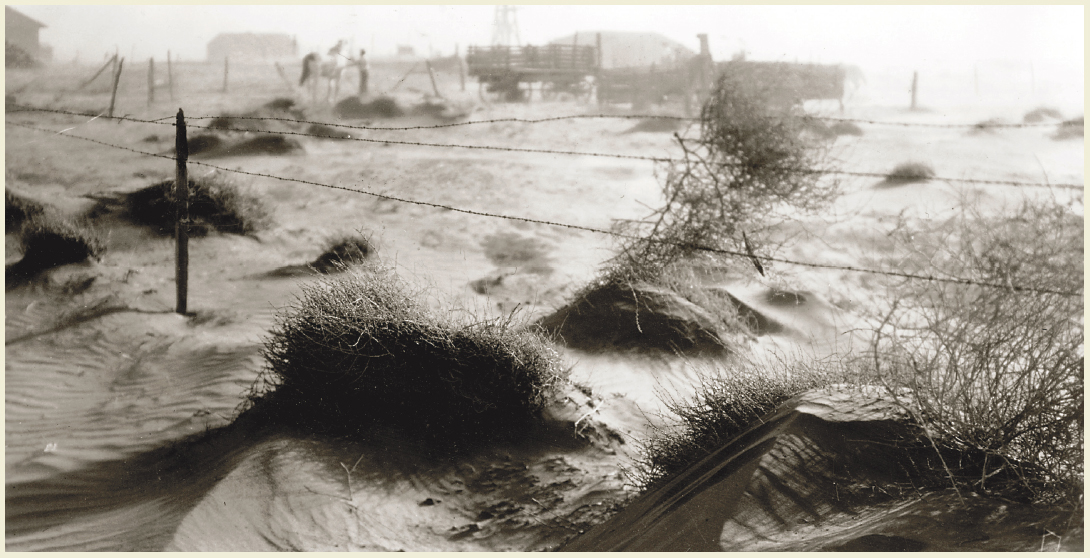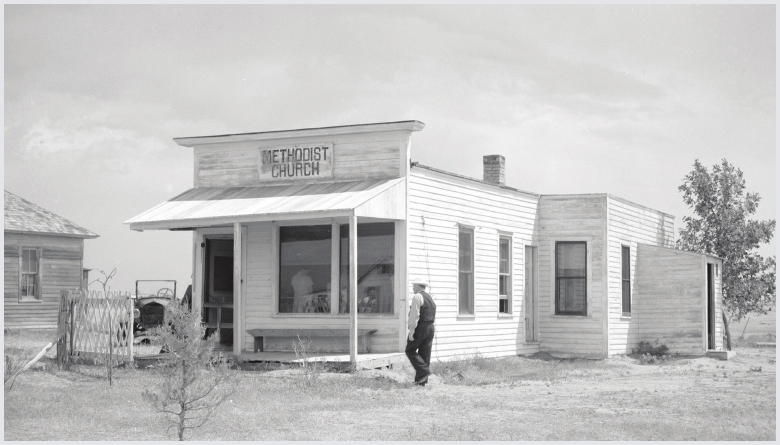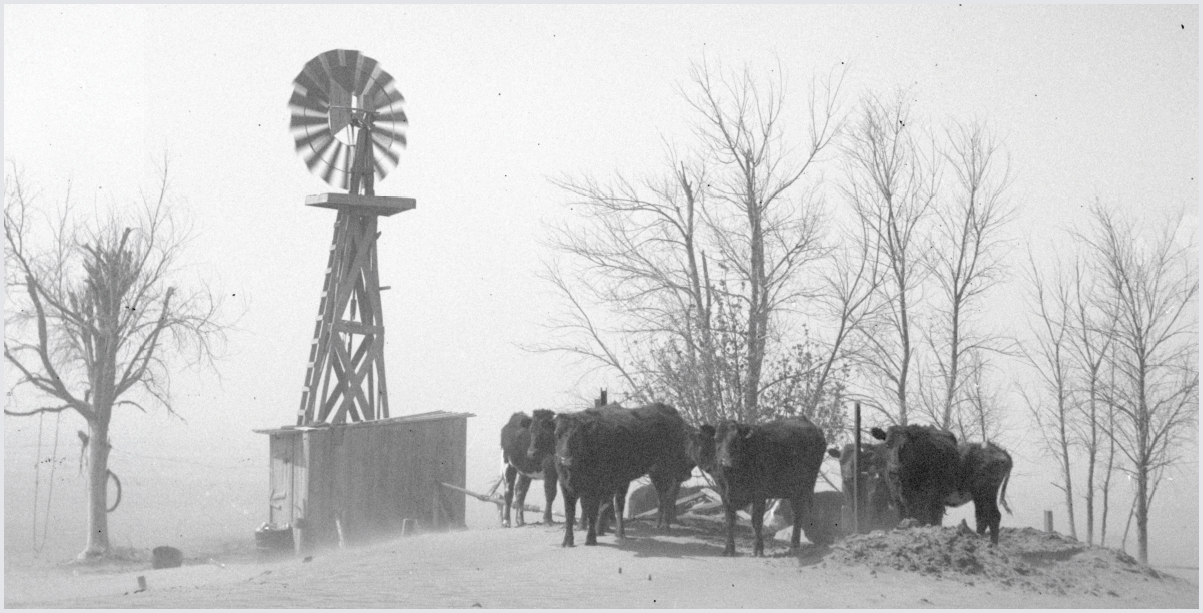SELECTED BIBLIOGRAPHY
- Babb, Sanora. On the Dirty Plate Trail: Remembering the Dust Bowl Refugee Camps. Austin: University of Texas Press, 2007.
- Cronin, Francis D., Howard W. Beers, et al. Works Progress Administration Research Bulletin: Areas of Intense Drought Distress, 19301936. Online by Federal Reserve Archive. http://fraser.stlouisfed.org/docs/publications/books/aidd_wpa_1937.pdf
- Dayton, Duncan. The Dust Bowl: An Illustrated History. San Francisco: Chronicle Books, 2012.
- Holmes, Mabel. Diary Entries March 15March 22, 19351939. Online by the Kansas Historical Society and Kansas Historical Foundation. http://www.kansasmemory.org/item/210784/text
- Hunter, Lester. Id Rather Not Be on Relief. 1938. Online by the Library of Congress American Memory. http://memory.loc.gov/afc/afcts/images/st045/0001d.tif
- Lange, Dorothea, and Paul Schuster Taylor. An American Exodus: A Record of Human Erosion. New York: Reynal & Hitchcock, 1939.
- Roosevelt, Franklin D. Fireside Chat., September 6, 1936. Online by Gerhard Peters and John T. Woolley, The American Presidency Project. http://www.presidency.ucsb.edu/ws/?pid=15122
- Roosevelt, Franklin D. Summary of the Great Plains Drought Area Committees Preliminary Report and Conclusions Submitted during Drought Inspection Trip., August 27, 1936. Online by Gerhard Peters and John T. Woolley, The American Presidency Project. http://www.presidency.ucsb.edu/ws/?pid=15104
- Steinbeck, John. The Harvest Gypsies: On the Road to the Grapes of Wrath. Berkeley: Heyday Books, 1988.
THE BLACK BLIZZARD
Black and saffron clouds of dustspectacular, menacing, intensely irritating to man and beast alike, choking, blowing out tender crops, and lasting without mercy for dayshave darkened everything ...
from If It Rains by reporter Robert Geiger
Those fierce black clouds were part of a dust storm that blew across the at more than 50 miles (80 kilometers) per hour from Kansas to Texas. The Black Blizzard blotted out the sun and plunged day into night. Flocks of birds raced to outrun the storm. Gritty sand blasted paint from houses and cars. People ran for cover, shuttering windows and doors.
But nothing could keep the dust from blowing in. It blew through cracks, covering tables, beds, and dinner plates with fine dust. Dirt piles several feet high pressed against buildings. Crops were destroyed. Livestock choked to death.
Dust storms, like the Black Blizzard on April 14, blew away about 850 million tons (771 million metric tons) of top soil in 1935.
The Black Blizzard of April 14, 1935, was one of the worst dust storms in American history. But it was only one of hundreds of severe dusters to hit the plains states during the 1930s. These storms earned the area the nickname the Dust Bowl.
THE DUST BOWL
Drought affected 50 million acres (20 million hectares) of the Great Plains. But the worst conditions were found around the Oklahoma and Texas , and this area became known as the Dust Bowl.
DROUGHT IN THE PLAINS
Severe drought, plowing, and soil created the Dust Bowl conditions. The flat, treeless plains that were once sheltered with a carpet of short grasses became parched and covered in sand drifts. From 1930 to about 1940, much of the Dust Bowl looked like a desert. But it wasnt until the Black Blizzard of 1935 that the area gained its famous Dust Bowl name. Robert Geiger, an Associated Press reporter, wrote Three little words ... rule life in the dust bowl ... if it rains.
The once plant-filled plains transformed into desert landscapes in the Dust Bowl.
DROUGHT
The crops, livestock, and people of the Great Plains depended upon rain for survival. Rain watered the crops. It filled drinking wells. But for 10 years during the 1930s, little rain fell. Churches even began holding services to pray for rain.
Titled Going to church to pray for rain, this image was taken in July 1936 by Arthur Rothstein. Rothsteins image of life in North Dakota shows how desperate people in the Midwest were for rain.
Hoping and praying for rain proved unsuccessful. Scientists studying the situation wrote, ... crop cultivation over the greater part of this territory is ... doomed to failure.
Blowing topsoil covered animals watering holes, making survival very difficult.
Without rain farmers crops died. Fruits and vegetables in family gardens died. Soon the livestock that families depended upon for meat and money died too. Problem after problem could be traced back to drought.
PLOWS AND WIND
Soil erosion also contributed to the Dust Bowl. Before settlers moved in, the Great Plains were covered by thick grasses. But as more people moved into the plains, they began to change the natural landscape. In 1862 Congress passed the Homestead Act, which promised each settler 160 acres (65 hectares) of land. Thousands of people moved for the chance to own land. Then in 1907 lawmakers admitted the new state of Oklahoma. Once again the government lured settlers with offers of cheap land. Thousands more people rushed to what was once called Indian Territory.
Homesteaders had to promise to improve the land. So they dug up the prairie grasses and planted wheat. At first the wheat was successful. But in those early days, the weather was unusually rainy. Soon the drought came, and the wheat died. The native grasses were gone, so nothing held the soil in place. Loose, parched dirt easily scattered with the wind.
Posters advertising the fertile land in Indian Territory encouraged settlers to farm the land.
CRITICAL THINKING
President Roosevelt stated the Great Plains were not adapted to the methods of agriculture being used. Yet the advertisement called the territory that garden of the world . How might merchants and land developers have benefited by calling the area a garden?
Farmers had also been plowing and planting for years without giving the soil a chance to recover. The soil lost its and became unproductive. President Franklin D. Roosevelt wrote, The basic cause of the present Great Plains situation is an attempt to impose upon the region a system of agriculture to which the Plains are not adaptedto bring into a semi-arid region methods which are suitable, on the whole, only for a humid region.

